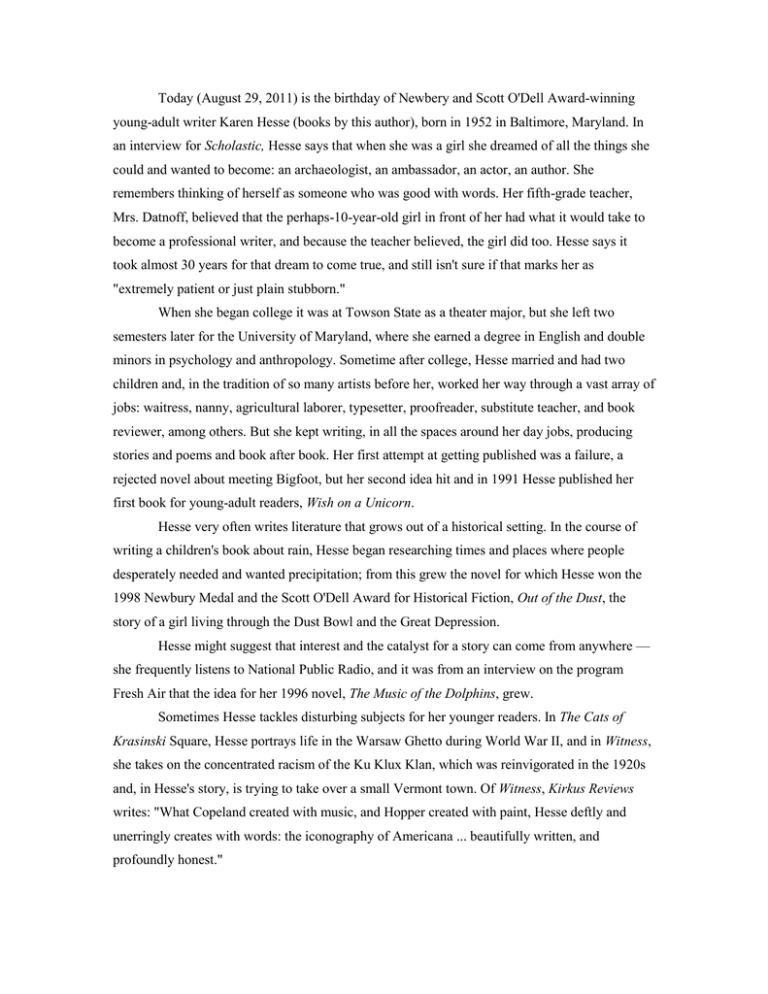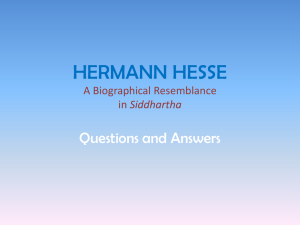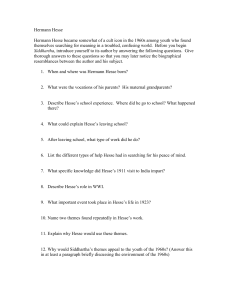Today (August 29, 2011) is the birthday of Newbery and... young-adult writer Karen Hesse (books by this author), born in...
advertisement

Today (August 29, 2011) is the birthday of Newbery and Scott O'Dell Award-winning young-adult writer Karen Hesse (books by this author), born in 1952 in Baltimore, Maryland. In an interview for Scholastic, Hesse says that when she was a girl she dreamed of all the things she could and wanted to become: an archaeologist, an ambassador, an actor, an author. She remembers thinking of herself as someone who was good with words. Her fifth-grade teacher, Mrs. Datnoff, believed that the perhaps-10-year-old girl in front of her had what it would take to become a professional writer, and because the teacher believed, the girl did too. Hesse says it took almost 30 years for that dream to come true, and still isn't sure if that marks her as "extremely patient or just plain stubborn." When she began college it was at Towson State as a theater major, but she left two semesters later for the University of Maryland, where she earned a degree in English and double minors in psychology and anthropology. Sometime after college, Hesse married and had two children and, in the tradition of so many artists before her, worked her way through a vast array of jobs: waitress, nanny, agricultural laborer, typesetter, proofreader, substitute teacher, and book reviewer, among others. But she kept writing, in all the spaces around her day jobs, producing stories and poems and book after book. Her first attempt at getting published was a failure, a rejected novel about meeting Bigfoot, but her second idea hit and in 1991 Hesse published her first book for young-adult readers, Wish on a Unicorn. Hesse very often writes literature that grows out of a historical setting. In the course of writing a children's book about rain, Hesse began researching times and places where people desperately needed and wanted precipitation; from this grew the novel for which Hesse won the 1998 Newbury Medal and the Scott O'Dell Award for Historical Fiction, Out of the Dust, the story of a girl living through the Dust Bowl and the Great Depression. Hesse might suggest that interest and the catalyst for a story can come from anywhere — she frequently listens to National Public Radio, and it was from an interview on the program Fresh Air that the idea for her 1996 novel, The Music of the Dolphins, grew. Sometimes Hesse tackles disturbing subjects for her younger readers. In The Cats of Krasinski Square, Hesse portrays life in the Warsaw Ghetto during World War II, and in Witness, she takes on the concentrated racism of the Ku Klux Klan, which was reinvigorated in the 1920s and, in Hesse's story, is trying to take over a small Vermont town. Of Witness, Kirkus Reviews writes: "What Copeland created with music, and Hopper created with paint, Hesse deftly and unerringly creates with words: the iconography of Americana ... beautifully written, and profoundly honest."


